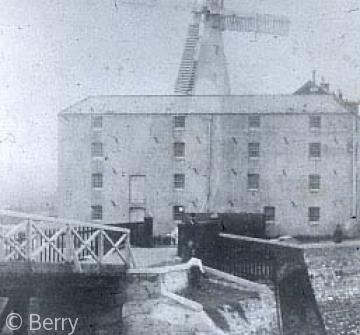Bishopstone Tide Mills East Sussex

This Georgian tidemill stood east of Newhaven in East Sussex very close to the coast. A few pieces of the foundations of the buildings and concrete platforms from later uses survive.
The remains of a long shingle spit provided shelter for stretches of a redundant river course, once the main outlier of the River Ouse which flows through the South Downs to its present outfall at Newhaven. For a long time the river had meandered along its coastal floodplain to Seaford which is why that town was a medieval port.
Bishopstone Tidemills lies between Newhaven and Seaford close to Bishopstone railway halt. The landscape is now changing so quickly that older Ordnance Survey maps and the Tithe Map, old photographs and the ninteenth century census enumerators’ schedules are the best sources of information about the scale of this business.
The possibility of a tidemill arose when in 1731-1733 a cut was made through the shingle at Castle Hill, Newhaven and secured by piers. This worked, whereas previous attempts to make a cut here had not.
The creek formed by this work lay in the parish of Bishopstone and was owned by Thomas Pelham-Holles, Duke of Newcastle. It was leased by him to three corn merchants and in 1761, a private Act of Parliament passed which enabled them to build a dam for the mill across the creek. Tidemills were not a novelty in the south east. John Challen and William Woods were Chichester corn merchants and John Woods of Chilgrove (near Chichester) and should have known the tidemill at Emsworth just west of Chichester.
By 1768 the mill was standing for then a French army officer mistook it for barracks. In 1791, John Woods advertised the mill for sale with a description of it. A Mr. Barton bought the mill in 1792 and in 1795 he entered a partnership with Edmund Catt. In 1801, Barton was replaced by William Catt. William had run a small mill in Lamberhurst (Kent) before he moved to Bishopstone. In 1808 he bought out Edmund Catt with the help of Edmund Cooper of Norton Farm (in Bishopstone) and Thomas Farncombe of Bishopstone Farm, both wealthy tenant farmers. The profits of the mill, which Catt extended, came from the demand for milled grain during the Napoleonic Wars not only in Sussex where the seaside resorts such as Brighton expanded but also for the many barracks such as the one at Seaford. Catt and Cooper invested at Shoreham and in Brighton, thus developing new markets for their products.
(C) Sue Berry
To read more see Sue Farrant (now Berry) ‘Bishopstone Tidemills’ Sussex Archaeological Collections Vol.113 (1975) 199-202.
Content derived from research undertaken as part of the Victoria County History project
Content derived from research undertaken as part of the Victoria County History project

